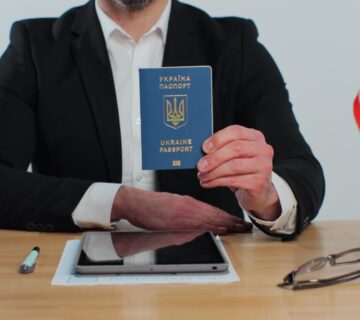An L-1 visa allows a U.S. company to transfer a manager, executive, or employee with “specialized knowledge” from a related foreign office. The application requires the U.S. employer to file a petition, demonstrating eligibility for both the company and the employee. Key factors are categorized by requirements for the company, the employee, and the purpose of the transfer.
Employer requirements
- Qualifying relationship: The U.S. company must have a specific, verifiable relationship with the foreign company, such as being a parent, subsidiary, affiliate, or branch.
- Active business: Both the U.S. company and a related foreign office must be actively “doing business” throughout the employee’s stay. “Doing business” means regularly providing goods or services, not merely having an office or agent.
- New office establishment: If the transfer is to open a new office in the U.S., the company must submit additional evidence, including:
- Proof of secured physical premises.
- A credible business plan detailing market analysis, financial projections, and personnel structure.
- Demonstration of financial ability to commence operations and compensate the employee.
Employee requirements
- One year of foreign employment: The employee must have worked for the related foreign company for at least one continuous year within the three years before the petition is filed.
- Qualifying role abroad: The employee’s foreign position must have been in a managerial, executive, or specialized knowledge capacity.
- Qualifying role in the U.S.: The employee must be transferring to a position in the U.S. that is also in a managerial, executive, or specialized knowledge capacity. The visa category (L-1A or L-1B) is determined by the U.S. role.
- Dual intent: Unlike some other non-immigrant visas, the L-1 visa is dual-intent. This means the employee is permitted to pursue permanent residency (a Green Card) without jeopardizing their visa status.
L-1A visa (for managers and executives)
- Capacity: The employee must either manage the organization, or a major department or function, or manage other professional employees. They must have significant authority and discretion, not primarily be focused on day-to-day operations.
- New office transfers: For new offices, the employer must show that the U.S. operation will be large enough to support a managerial or executive position within one year.
L-1B visa (for specialized knowledge)
- Specialized knowledge: The employee must possess knowledge of the company’s products, services, research, equipment, techniques, or management that is unique and not easily found in the U.S. labor market.
- Distinctiveness: The knowledge must be both proprietary to the company and so advanced that it is not easily transferable to another individual.
Application process considerations
- Petition filing: The U.S. employer initiates the process by filing Form I-129, Petition for a Non-immigrant Worker, with USCIS.
- Evidence: The employer must submit extensive documentation, including:
- Proof of the qualifying corporate relationship, such as financial statements, stock certificates, and articles of incorporation.
- Proof of the employee’s continuous foreign employment and job duties.
- Company organizational charts.
- New office scrutiny: L-1 petitions for new offices receive more scrutiny, requiring comprehensive business plans and evidence of a viable operation.
- Blanket petitions: Large, qualifying multinational companies can file a blanket petition to pre-certify their eligibility, which streamlines the process for individual employee transfers.







No comment